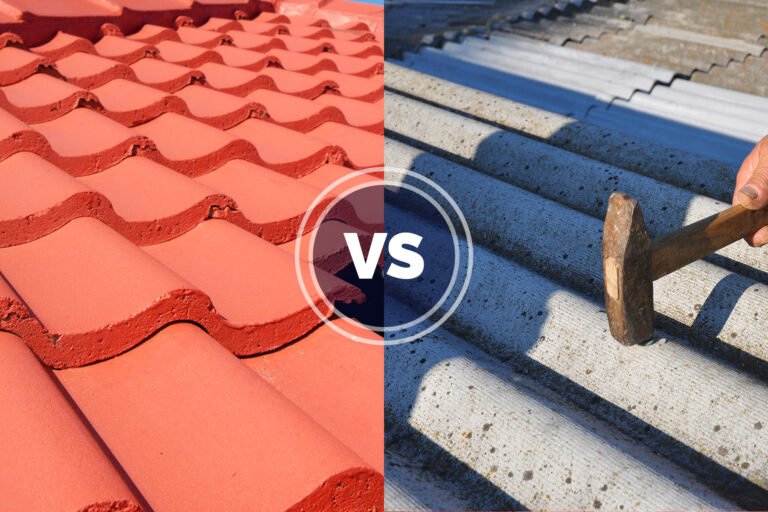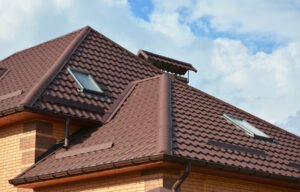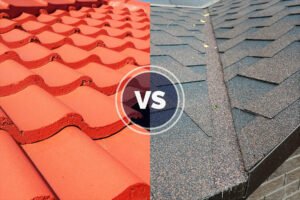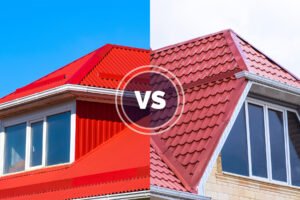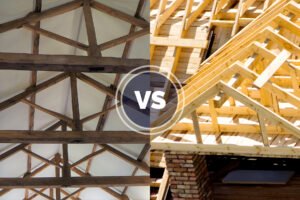Clay or concrete roof tiles? A tough choice, isn’t it? Both these roof tiles are famous for their rich classical appeal and strength. But, while concrete tiles are sturdy, clay tiles offer a better attic temperature. Now you’re probably wondering which of the two to pick. If so, stay tuned!
Today, we’ll compare these two tiles based on cost, strength, and much more! So, what are you waiting for? Let’s dive in!
Key Takeaways
- Clay and concrete tiles differ in shape, cost, and lifespan. In fact, clay tiles last for about 150 years, while concrete tiles start breaking after 40 – 50 years.
- Always use clay tiles where there is excess water. Where concrete tiles break with rain, clay tiles drain water and won’t warp easily.
- Concrete tiles stay cool in summer and warm in winter, whereas clay tiles don’t. So, they might need additional air conditioning or roof vents inside.
- Clay roof tiles are brittle and can break with a heavy load. But concrete tiles are sturdy. But this isn’t all! Go ahead and read all the details to know more!
What Are Clay Roof Tiles?
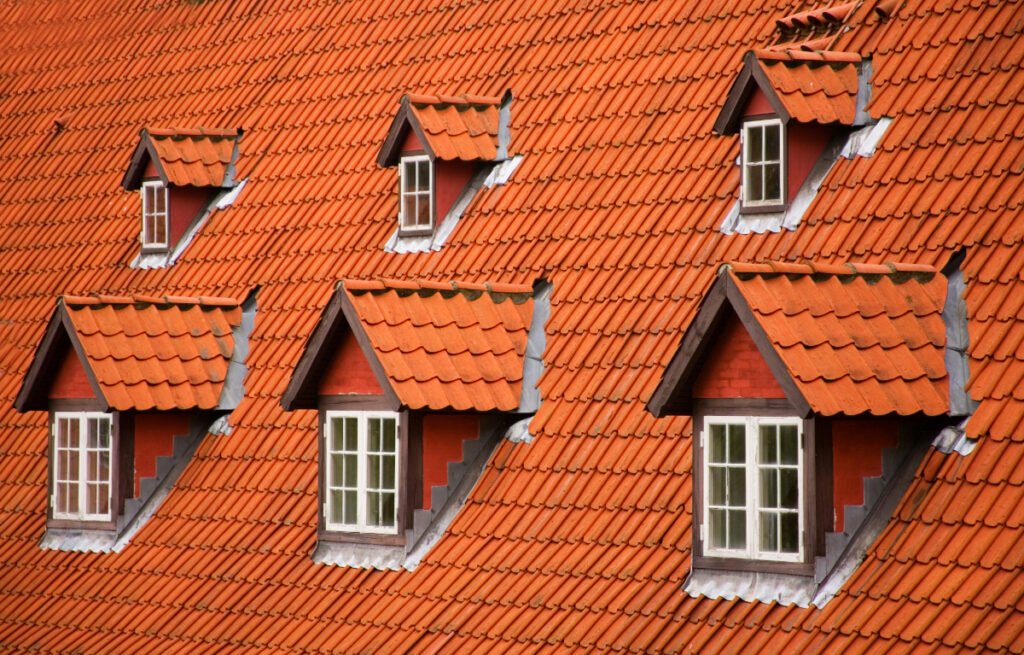
As the name suggests, clay roof tiles are baked mud tiles pressed into small rectangles. So they are more compressed and don’t lose their strength. And since the clay is piled and crushed before molding, you’ll get a smooth, stain-free finish with these tiles.
You can also expect these tiles in different yet limited colors like red, black, gray, brown, and green. And you can always try roof tile painting for more customization!
| Average Cost | $7.8 – 15 per square foot |
| Average Lifespan | 125 – 150 years |
| Standard Size | 19 X 14½ inches |
You can coat the clay tiles with plastic films or enamel to create a water-resistant cover.
What Are Concrete Roof Tiles?
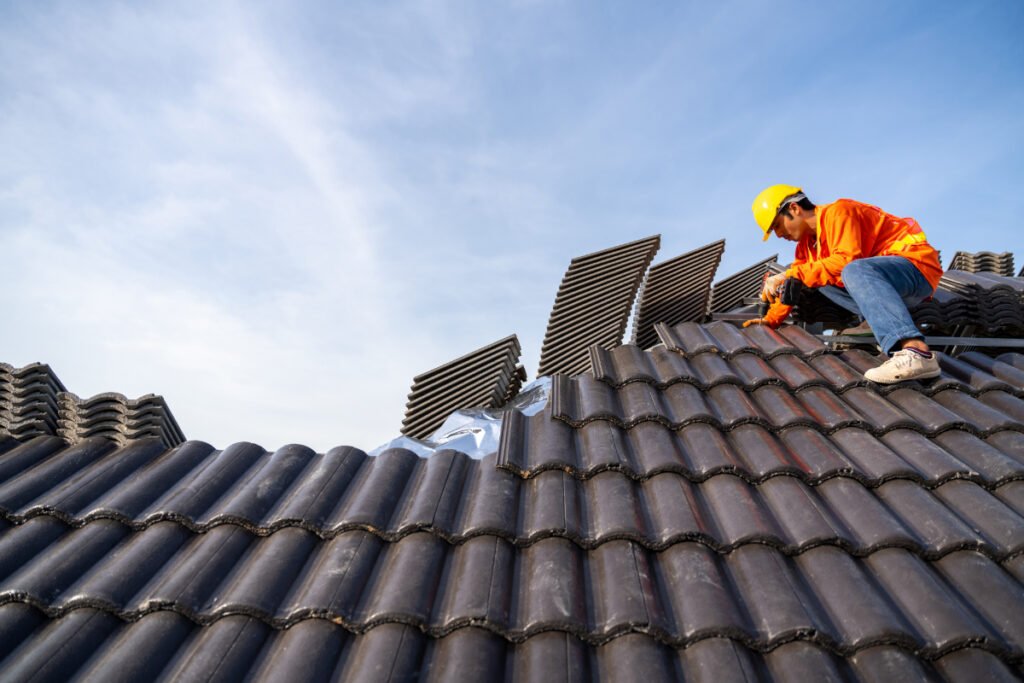
Concrete tiles are made of cement, sand, water, and iron oxide. So, you can think about their high strength and durability! Concrete tiles are dense and thick, so you can customize them to flats or curves without worrying about chips and cracks.
Moreover, concrete tiles are also more customizable. You can find them in various colors like red, blue, gray, purple, black, or white. Or, you can stain them or add a veneer to look like faux wood or stone.
Either way, they are great for your fancy villas and farmhouses!
| Average Cost | $4 – 7 per square foot |
| Average Lifespan | 40 – 50 years |
| Standard Size | 12 X 16½ inches |
Add some foam or bitumen felt under the concrete roof tiles. This will insulate them and reduce their porosity.
Differences Between Clay & Concrete Roof Tiles
Okay, so now we know the main features of clay and concrete roof tiles. But actually, there’s a lot more comparison yet to do! So, let’s see some important factors to help you decide!
1. Shape & Appearance
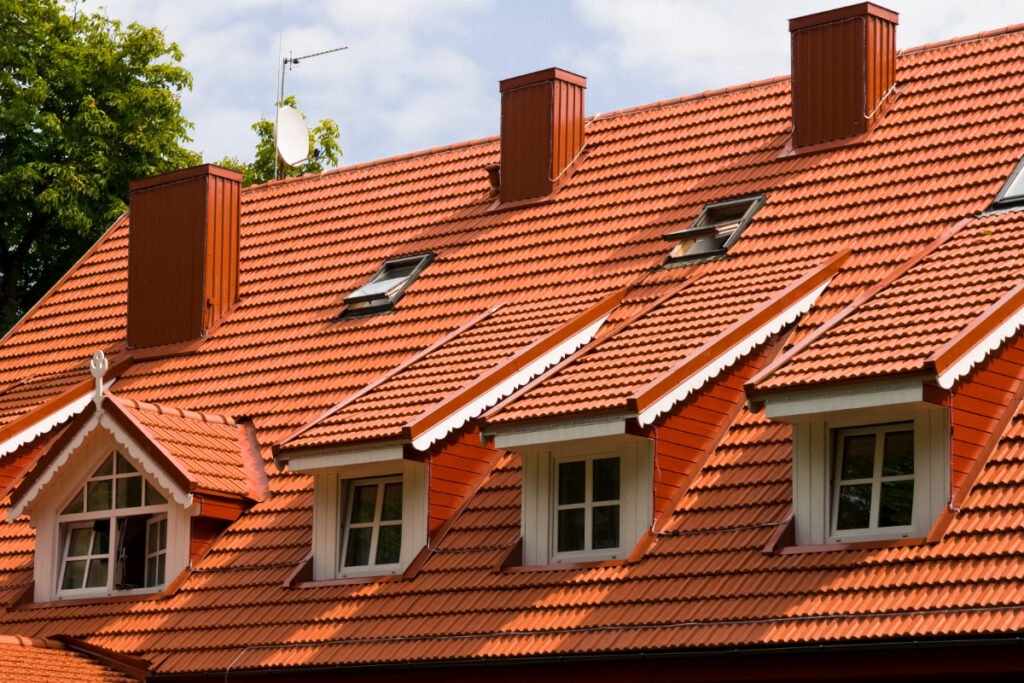
The first, most obvious comparison factor is how they look! And let’s be honest! Clay tiles aren’t that fancy and look flat and rectangular. But what sets them apart is their curved profile that designs vintage diamond roofs.
But if you need a high-end roof, go with concrete! These tiles are curved and hollow, like half-cut pipes that adapt to your roofline. That means you can use them for both flat and pitched roofs! Better, right?
In short, clay tiles are plain, retro, and cottage-like, whereas concrete ones are curved and ultramodern tiles for the villas. So, choose the one that suits your roof the best!
Pick brushed concrete tiles for a retro look and textured ones for a modern visual.
2. Availability
Now, you may wonder why we are talking about availability suddenly.
Well, it might be a surprise, but clay tiles aren’t available 24 X 7, especially during the monsoons. It’s because clay is a natural material and needs sunlight to dry.
But concrete tiles are factory-made and mass-produced. So, they don’t depend on the climate and are available everywhere.
So, you should use clay tiles in sunny areas like Hawaii and Florida. Otherwise, you’ll just slow down the roofing and pay huge bills on tile transport.
You can use faux wood tiles with a terracotta finish if clay roof tiles aren’t available.
3. Cost
We already discussed that clay tiles cost about $7.8 – 15 per square foot. But you’ll also need to spend at least $3 per square foot for the labor. So, your total roof cost might range between $35,000 – 42,000 for a medium-sized roof.
Contrary to this, concrete tiles are much cheaper and cost $4 – 7 per square foot. Trust me; you’ll only need about $12,000 – 15,000 to build the roof and seal it. So even if you repair it regularly, it’ll still be half the price of a clay roof!
Pick flat or low-profile clay tiles for faster installation and low labor charges at $1 – 2.
4. Durability
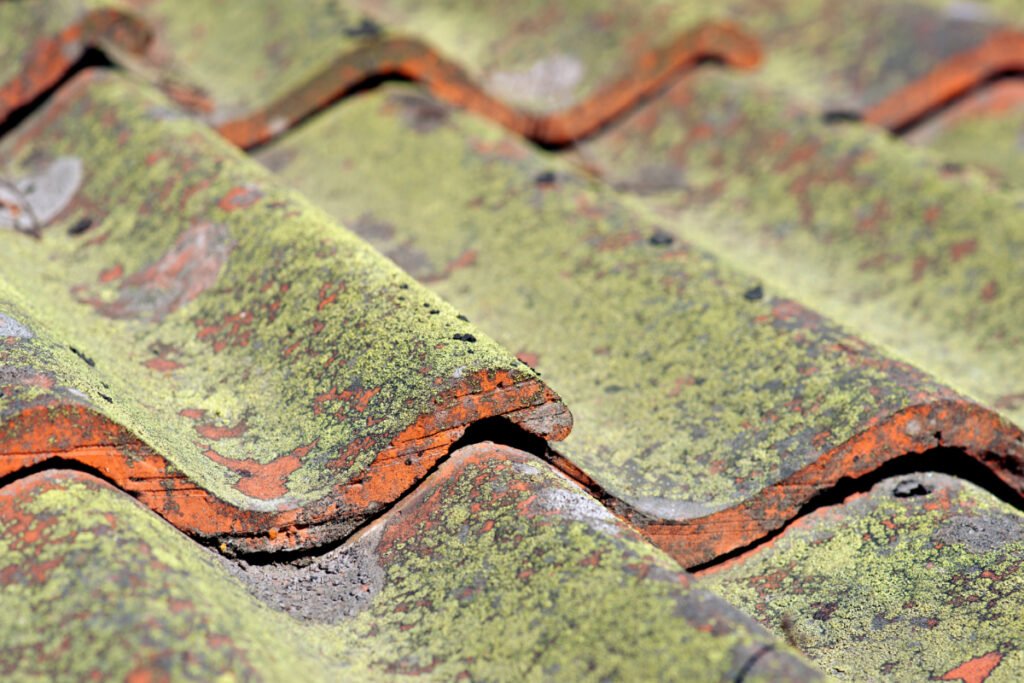
Both clay and concrete tiles are thick and strong. But clay tiles are the more durable of the two and retain their color and finish for 100 – 150 years! They’ll repel all the dust, UV rays, and surface stains, standing the tests of time, just like plastic.
And guess what? They’ll also withstand heavy rain and save your roof from nasty leakage, fungus, and those creepy pests.
But concrete roof tiles last for about 30 – 50 years. And they might absorb moisture, turn bumpy and destroy the roofline. But you can add roof flashing and cement to protect the tiles in low-mid rains. So, it’s not that much of a big problem!
The biggest concern, however, is their brittleness and porosity.
Concrete tiles absorb dust and salts, so they start fading with time. Plus, they might break with loads, and you’ll need to replace them frequently. So, better avoid them in coastal and country areas.
Spray 2-3 coats of enamel over your concrete tiles. This will control the dust and make cleaning easier.
5. Preferred Climate & Temperature
Do you know why you don’t find clay roofs in snowy regions? Well, that’s because they break when cold. But you can coat them with asphalt to withstand light snowfall.
Concrete tiles, on the other hand, are much more flexible toward hot and cold temperatures. The reason? Firstly, concrete doesn’t expand or contract like clay, and secondly, it doesn’t break easily.
But as a precaution, try to avoid concrete tiles in humid areas, as there’s a slight chance that they will warp and deform.
Spray some neem oil over the concrete tiles to reduce water absorption in tropical regions.
6. Weight
Both clay and concrete tiles are very heavy and need strong rafters to hold them. But concrete is the heavier of the two and weighs twice that of clay roof tiles!
Technically, clay roof tiles weigh about 6 – 6.5 lbs per square foot, whereas concrete tiles weigh anywhere between 8.5 – 11 lbs per square foot. So, you should avoid using concrete tiles on your old roofs or garages.
Use strong queen, flat or attic roof trusses to hold heavy concrete roof tiles.
7. Ease of Installation
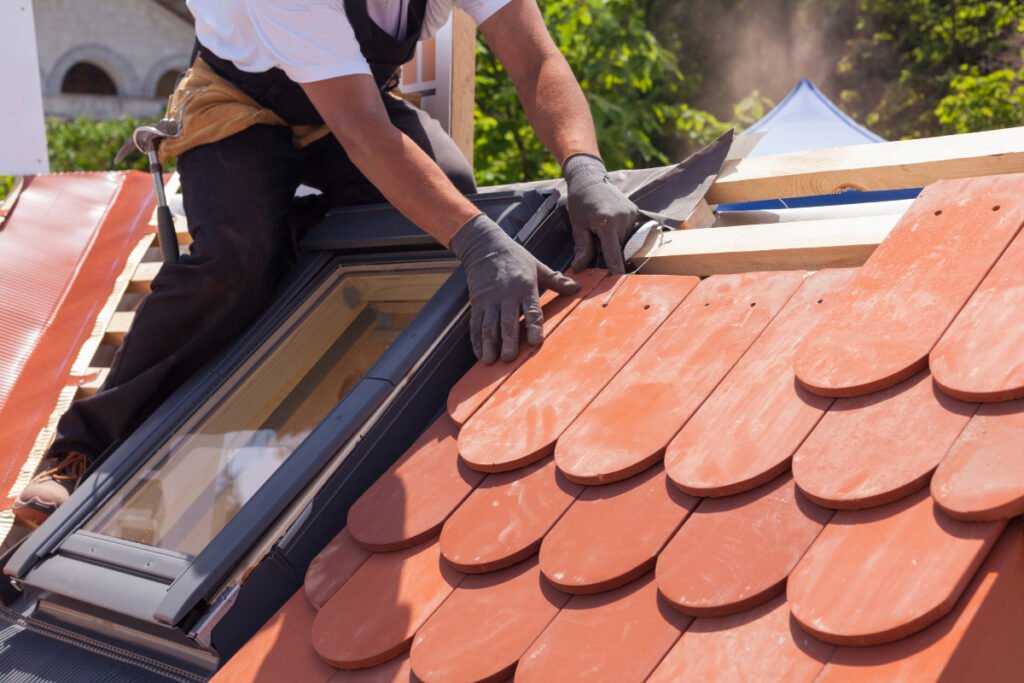
We already talked about how clay tiles are difficult to install, right? But what’s more concerning is that you can’t walk on the tiles to place or pack them as they can break.
But on the other side, concrete tiles are easy to place and fill. Yes! You can freely walk on the tiles, screw them or glue them; whatever suits you best!
Use lightweight Cedar or Spanish concrete roof tiles to make installation easier.
8. Insulation
Ah, yes! How can we miss talking about roof tile insulation?
Clay tiles are much more insulating than concrete tiles and have super-tight surfaces that trap heat. Contrary to this, concrete tiles have wider gaps that increase the airflow and affect the attic temperature.
Also, if you need good noise and UV absorption for the roof, go for clay tiles. You can count on them for better humidity and wind control near forests and coasts. Just remember to use Class-A-rated clay tiles for better results.
Pack some fillers, rubber strips, or sealants between the concrete tiles to hold the heat better.
9. Water Absorption and Porosity
The rougher the finish, the more porous the tile! So naturally, the rough concrete tiles are more porous and might absorb water up to 12-13% of their volume. This also makes them more vulnerable to sogginess, fungus, and pests.
On the other hand, clay tiles are baked and absorb water up to 6% of their volume. So, they are obviously more compact and face fewer problems in the long run!
Paint the concrete tiles with water-resistant epoxy or acrylic paint to reduce the porosity.
10. Ease of Maintenance
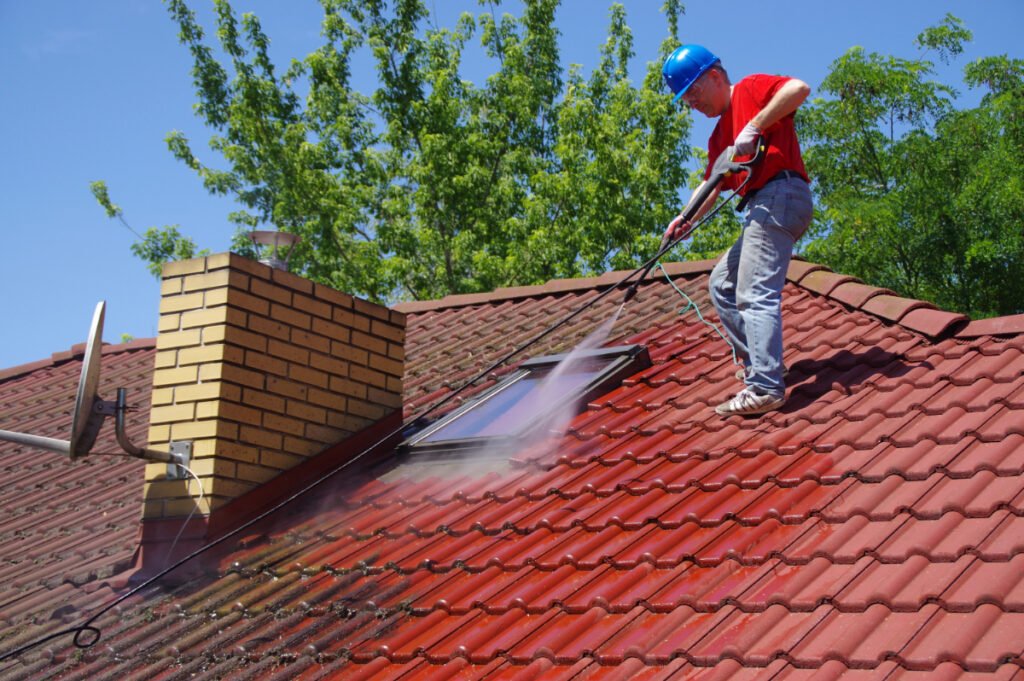
Let’s be honest! No one has the time to clean roof tiles regularly. So, clay tiles are a good choice here as you won’t need to clean their polished surfaces frequently.
But, it isn’t the same case with concrete. Concrete tiles are very porous and will turn green or black soon. So, they need regular cleaning with vinegar and bleach. So, be ready for some cleaning sessions with concrete!
Paint the concrete tiles with any oil-based color or enamel to look clean and stain-free for long.
Let’s check out this quick comparison table of clay and concrete roof tiles. You can print it as a reference for your roof tile selection.
| Parameters | Clay Roof Tile | Concrete Roof Tile |
| Cost | $7.8 – 15 per square foot; High upfront cost and low long-term cost | $4 – 7 per square foot; Low initial cost, but high long-term cost |
| Thickness | 12 – 15mm thick; Heavy, but lighter than concrete tiles | 20 – 25mm; Extremely heavy and sturdy |
| Roof Pitch | 25 – 30°; Moderately pitched roofs | 15 – 40°; Flat to pitched roofs |
| Average Weight | 840 lbs per square | 950 – 1200 lbs per square |
| Energy Savings | 5 – 6% on cooling and air conditioning cost | 9 – 10% on insulation and electricity consumption |
| Acoustics | Absorbs noise; better acoustics | Low sound control; Might crack with heavy vibrations |
| Preferred Climate | Hot, Dry, Humid and Tropical | Hot, Snowy, Tundra, and Temperate |
| Resale Value | 3 – 4% depending on the finish and condition | Simply replaced and recycled after 50 years |
| Availability | Glazed and kiln-fired clay tiles are difficult to get. But small DIY tiles are readily available. | Easy to get from any local store or supplier |
| Warranty | 25 – 30 year warranty | 15 – 20 year warranty |
| Roof Ventilation | Super tight surfaces and less ventilation | Larger gaps and higher wind flow |
| Popular Colors | Orange, Red, Black, Brown and Olive | Beige, Blue, Cream, Tan, Gray, and Black |
Other Factors to Differentiate Between Clay and Concrete Roof Tiles
Which Roof Tiles Should You Use in Extreme Climates?
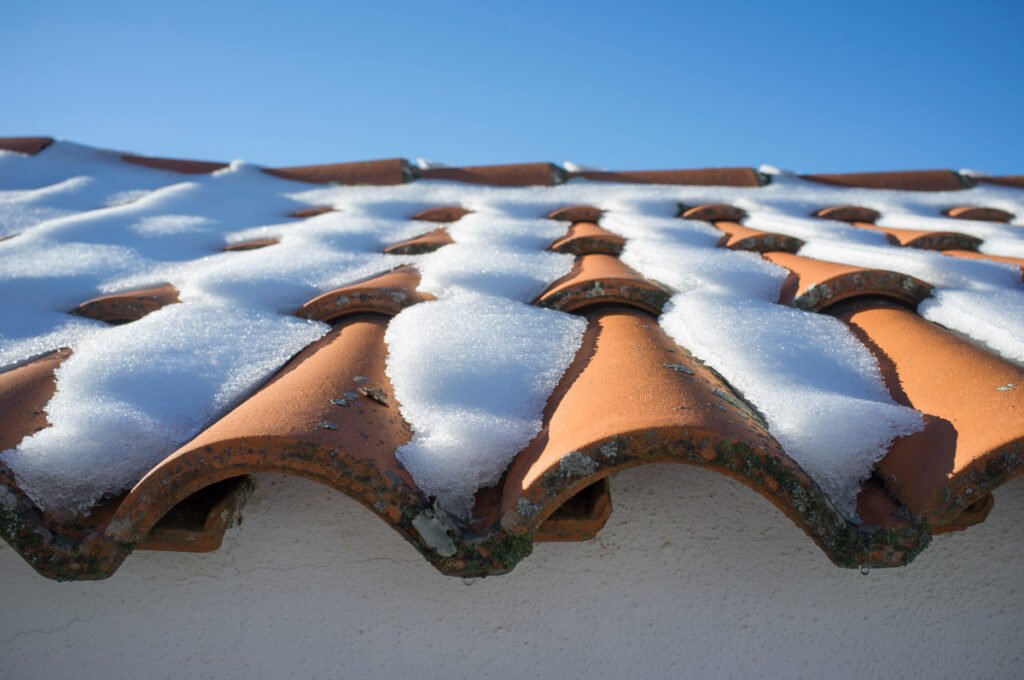
You should prefer glazed or kiln-fired clay tiles if you live in tropical areas. Research shows these will drain the stormwater and save your roof from leaks and fungus. But the tiles may warp. So, keep some sealants within arm’s reach.
On the other hand, if you’re in a colder or snowy area, you should use stronger concrete tiles.
But if you live in temperate zones, you could go with any tile that makes your home sweet!
Insulate the concrete tiles with foam or batts to trap more heat in winter.
Which Roof Tiles Will Lower Your Energy Bills?
Does your father complain about power bills? Install concrete roof tiles and tell him to relax!
Concrete tiles surprisingly maintain the temperature in warm and snowy areas. And you can even rely on them for good ventilation without extra fans inside!
But clay tiles are also very energy-efficient in hot and tropical regions. They’ll reflect all the UV rays and keep your roof cooler. So, pick what your home needs!
Dabb your concrete tiles with black paint for better warmth and energy savings.
Which Roof Tiles Should You Use in Fire-Prone Areas?
Let’s imagine that you live near the woods or mountains, and there’s a fire coming around. Wouldn’t you like your roof to at least stop the spread of fire?
That’s where concrete tiles step in! These are class-A fire rated and will curb the flames and protect the walls at all costs.
In contrast, clay tiles are nothing but natural mud! So yes, they’ll just burn in fire, turn black, and may even spread the fire to your walls. But don’t panic! You can get them coated to improve their fire resistance.
Paint your clay tiles with intumescent paint and add a fire cover to save them from burning.
Tips for Picking the Best Roof Tile for Your Home
- Use a medium roof pitch and a simple roof shape to save your clay tiles from falling off the roofline.
- Add adequate diagonal supports and mount the trusses at 45° to support both roof tiles easily.
- Paint the concrete tiles with trendy colors such as black or green for dust-free surfaces and high curb appeal.
- A vapor barrier or bitumen felt will save the tiles from leaks in the monsoons. So, make sure that you have those in your store.
Are Clay Roof Tiles Waterproof?
Clay tiles aren’t 100% waterproof but effectively drain the excess runoff and block leakage. I mean to say that they do not allow water to seep inside the house. But they might show little hard water stains with time.
Why Do Concrete Roof Tiles Fail?
As we already discussed, concrete roof tiles might fail due to heavy rain or hail. The thing is, they turn damp, catch fungus and lose all their strength with moisture.
Do Clay and Concrete Tiles Save Energy?
Yes, clay and concrete roof tiles are very energy-efficient. Where clay tiles reduce the cooling costs in warm areas, concrete tiles save up on heating in cold areas. So, they both save at least 2 – 4% of electricity consumption.
In a nutshell, both these tiles are heavy and thick. But what sets them apart is their cost, durability, and energy use. While clay tiles cool the roofs in warm areas, concrete tiles stay warm without extra heaters. So, analyze your climate and choose the best.
But are your roof rafters old and damaged? Well, don’t worry! You need not change the entire roofing system. Instead, you could just go with lightweight roof tiles and shingles. Want to know more? Join us as we discuss the types of roof tiles and shingles in detail!

